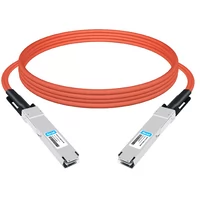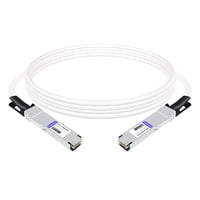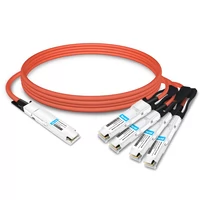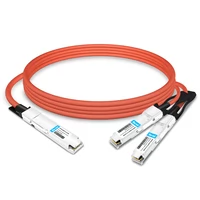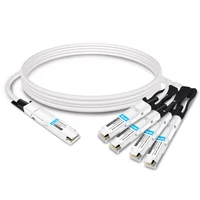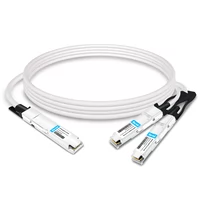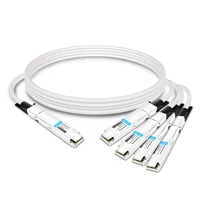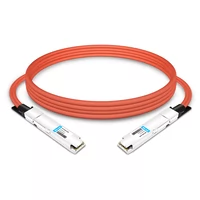With the growing extremes in mass amounts of data coming into today’s society, the advancement in technological vertical networking solutions is critical. Since data centers, high-performance computing (HPC), and AI applications continue to intensify, more than ever, there is a need for strong technology that can interconnect everything. NVIDIA’s LinkX cables come out as the answer to interconnect technology challenges. These cables meet all the requirements for performance, efficiency, and expansion. The blog discusses the research and development effort that helped to innovate NVIDIA LinkX cables, their importance in raising the efficacy of a data center’s infrastructures, and how LinkX copes with current and future requirements of high-speed networking. The appeal of these technologies will expand horizontally, offering opportunities whether you are an IT professional looking to enhance infrastructure capabilities or a decision-maker looking for cost-effective networking options.
Table of Contents
ToggleWhat Makes NVIDIA LinkX Cables Unique?
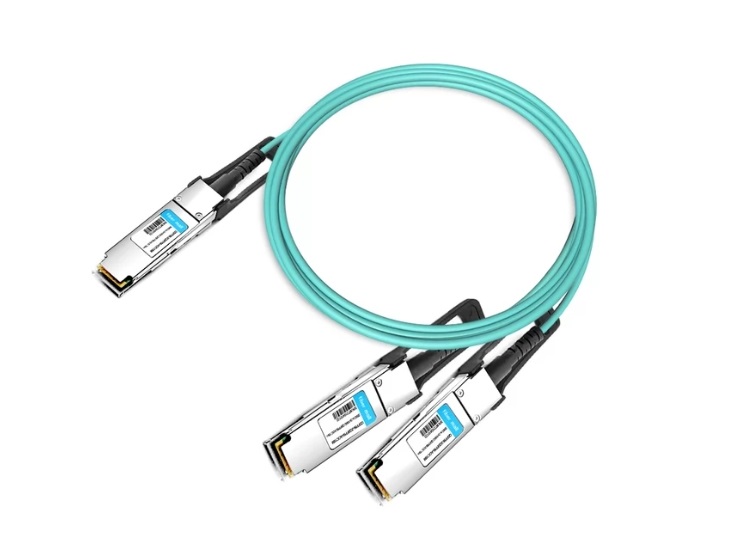
NVIDIA LinkX cables can be singled out by their outstanding bandwidth features, which go up to 400 Gb/s and guarantee the optimal transfer rates necessary for data-demanding tasks. Their signal loss and distortion are very low, all of which might be very beneficial in sustaining the communication efficiency across the interconnected nodes. The cables incorporate advanced thermal management and new material science techniques to improve durability and reliability while reducing power consumption. Also, they have a plug-and-play feature, meaning they can be integrated into already established structures easily without wasting much time and complication. These characteristics, in essence, make NVIDIA LinkX cables no doubt a must-have for contemporary data center systems.
Understanding the Technology Behind LinkX
NVIDIA LinkX prided itself in designing cables that incorporate cutting-edge advancements, making performance relevant in the fast-paced world of data centers. The prominent feature in their design is the application of modern copper and optical fiber technologies, both of which meet different deployment requirements. Copper cabling is highly suitable for short-distance friendly communications with clear signal transmission. However, for long-distance applications, optical fibers are ideal as they have higher available bandwidth and lower attenuation.
The advanced modulation present in the cables PAM four (Pulse Amplitude Modulation) is utilized to achieve high data rates while fundamentally not increasing the minimum frequency of the signal. This particular modulation delivers better data throughput while achieving good spectral efficiency, hence the need for density.
On the other hand, in terms of materials LinkX cables use advanced polymers with higher dielectric capacities able to minimize electromagnetic interference thus distortion of the signal is lowered. The cables also contain tough outer protective coatings that prevent mechanical forces and conditions from damaging the material.
In addition to LinkX’s product offerings, the cable architecture includes an extensive collection of monitoring and diagnostics mechanisms. These tools allow the operators to monitor the status and performance of the cables in real time, allowing for a predictive maintenance strategy and minimizing the risk of unplanned outages. On all accounts, the advanced engineering of NVIDIA LinkX cables not only advances the frontiers of speed and reliability but integrates within an efficient, environmentally friendly, and robust networking ecosystem.
The Benefits of Using NVIDIA LinkX
The NVIDIA LinkX products stand out for their active cables and LinkX cables. A high degree of performance is guaranteed by using high data rates brought about through advanced modulation techniques such as PAM4 that foster high data transmission in high-density zones. The precise composition of polymers, which are dielectric materials, minimizes electromagnetic interference, hence reducing signal distortion. In addition, the strong insulating layers that are protective keep the cables from mechanical and environmental wear and tear, hence ensuring durability and strength. Built diagnostic tools and monitoring facilities provide insights into the performance in real time and are useful in making predictions about maintenance needs, thereby minimizing failure risks. Together, these enhance performance by balancing speed, security, and sustainability of the network infrastructure, making it fit for the adoption of advancements in technology.
Comparing NVIDIA LinkX to Other Cables
In the last paragraph of this report, we will make a general comparison between LinkX and other similar products available in today’s marketplace, which currently form the other broad category in which NVIDIA LinkX is said to be superior. To begin with, LinkX cables are designed to injure extremely high-band transmission channels through PAM4 modulation, which isn’t common for other cable products. This enables them to transmit data in a more effective way, especially in environments with high-density networking. Furthermore, NVIDIA LinkX cables feature novel polymers that improve the dielectric properties of the cable, such as reducing electromagnetic interference, which reduces signal distortion as compared to many other cables. One evident benefit is the availability of advanced LinkX diagnostics that are built into the architecture, allowing LinkX users to continuously monitor performance and facilitate advanced maintenance in prediction, which a lot of other competitors may not have. These inherent features, coupled with the emphasis on environment and robustness, enable these cables to be at the upper tier of the networking apparatus market.
How Does Ethernet Integration Work with LinkX Cables?
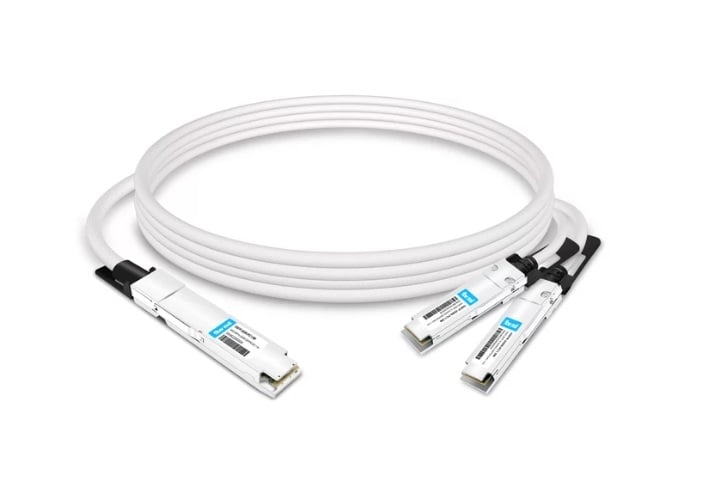
LinkX Ethernet Capabilities
NVIDIA LinkX links are purposefully designed for ethernet inclusion within high-performance computing and data center environments. They are capable of Ethernet speeds between 25 and 800Gbps and will meet the latest performance standards needed in networks. Through advanced signal processing technologies like PAM4 modulation and forward error correction (FEC), LinkX guarantees the integrity of data and minimizes packet loss, thereby enhancing the reliability of Ethernet transmission. The Cables have also been incorporated with state-of-the-art low latency features that enhance high-throughput applications and reduce the data transfer waiting period.
Moreover, LinkX cables withstand electromagnetic radiation interference through superior shielding and the use of special dielectric materials, which is termed electromagnetic compatibility (EMC), making the cables ideal. These properties are crucial in dense deployment of networks where there is a lot of signal disturbance. In addition, the LinkX range also has active optical cables (AOCs) and direct attach copper (DAC) cables, which enables deployment in some scenarios based on bandwidth and distance. All these features position NVIDIA LinkX very well in the integration of Ethernet, making these solutions the most appropriate for today’s networking environment.
The Role of Data Centers in Ethernet Integration
Data centers are crucial for Ethernet integration as they act as a focal point for traffic flow and data processing. They have switching and routing facilities that are capable of high bandwidth Ethernet attachment, thus promoting effective network communication between the servers, storage, and outside environments. The structure that is in place within the data centers is capable of processing huge amounts of information instantly, and the use of NVIDIA LinkX technology allows for efficiency. The Ethernet integration within data centers allows for networks to grow unencumbered in response to the increasing use. Also, data centers utilize advanced monitoring and control systems to guarantee the network’s dependability and protection, thus making it possible to protect Ethernet-based networks.
Improving Network Latency with NVIDIA
NVIDIA addresses networking problems, particularly latency, in a number of different ways, as illustrated by some of the latest advances described in reviews of computer technology. First of all, NVIDIA Mellanox adapters are equipped with RDMA (Remote Direct Memory Access) technology, which allows lower latency by directly accessing memory units and skipping through host CPUs. Further, NVIDIA can count on Network Interface Cards (NICs), which have a very high-performance level that offers low latency ranges; this is essential for real-time applications and services in the data centers and, finally, through DPUs (Data Processing Units), which are yet another category of SmartNICs, Aiming for the desegregation of applications across server nodes, NVIDIA plans and effectively implements Up to 8 times better offload and acceleration of networking and security processes providing fast computing with minimal downtimes maybe in form of GPU intensive workloads meaning operational processing action which are suited for distributed architectures. Overall, these technologies improve network capabilities by coping with slow response times through multi-solution implemented architecture enhancement in almost any computer environment.
Exploring the Options: DAC and Optical Cables
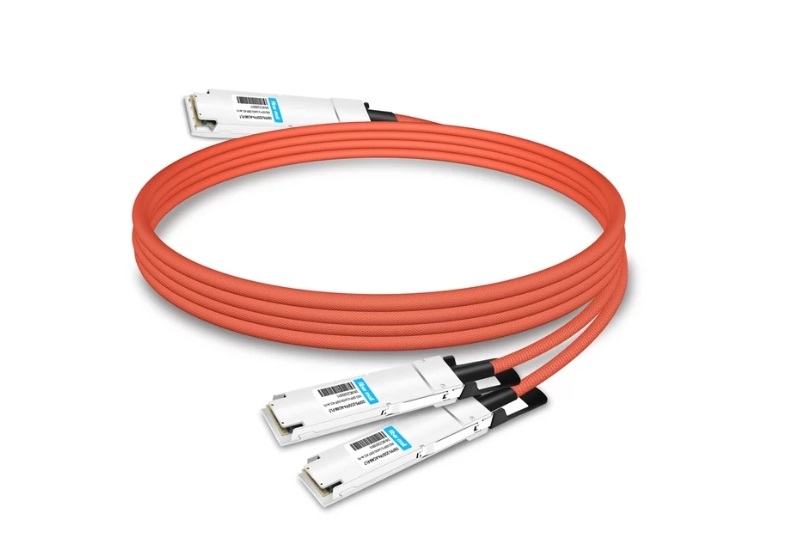
Features of Direct Attach Copper Cables
Direct Attach Copper (DAC) cables are key elements in the performance of data center hardware, as they allow an array of connections. Below is a thorough elaboration of features that define why networking with DAC cables is reliable:
- Cost-Effectiveness: DAC cables cost less than optical cabling, thus making it easier for short-distance deployment systems to dwell within sensible economic limits.
- Low Latency: Operating at low latency, these cables are suitable for the transfer of rapid data streams with minimum lag for a variety of tasks.
- High Data Rates : Cables that can work at high data rates are an absolute necessity to meet the bandwidth hungry demands of Modern day data cabinets and DAC do meet such commensuration.
- Energy Efficiency: They also reduce the cost of data center operations as they do not require expensive optical transceivers for their usage, which evolved into them requiring less energy.
- Ease of Installation: The basic structure and function of the DAC cables assist with installation as well as maintenance since it employs a plug and play technique which reduces the hassle involved in deployment.
- Durability: Built from tough materials, which affords strength to the wires, DAC wires are pretty strong and assure longevity and dependability in high density areas.
- Compatibility: Also they can plug into most of the devices including switches, routers, servers, thus they can be integrated to the already existing infrastructure without any hitches.
- Resistance to EMI: DAC cables also allow the user to hold interference with electromagnetic interference, ensuring data security and minimizing transmission errors.
Thus, these features of DAC cables contribute well and assist in meeting the requirements of transmitting data at high speeds in today’s Ethernet networking architectures, enabling easy expansion and incorporation without a hassle.
Advantages of Active Optical Cables
In terms of AOC’s applicability scope, one could argue that the opportunities are vast given the fact that an AOC enables efficient transmission over enhanced bandwidths, data centers, enterprise networks, and more. One of the reasons for their high demand is because of their resilient nature. One concern that AOC addresses specifically is ems. This type of cable’s case correlates with the enhancement of the substance and the maximal efficiency and quality of the signal. Furthermore, as one of the aims of this type of cable is enhancing the data transmitting capabilities with fiber cable in large networks, it would be safe to assume that any data vintage would be transmitted through a cable lasting longer distances. Moreover, while the cost of infrastructure is generally considered to be costly, in this instance, the increasing reliance on data transmission within an industry has forced change to occur, meaning the performance of AOCs outweighs the cost of infrastructure needing to be updated. Lastly, the conclusion reached is purely because AOCs are not as resistant as dac and because they correlate to faster transmission. AOCs allow for longer data transmission, enabling usage within enterprise networks while allowing for more advanced applications.
Choosing Between DAC and AOC
The choice of either Direct Attach Copper (DAC) cables or Active Optical Cables (AOCs) in a network is determined by a number of aspects, all of which are necessary for specific requirements in the networks.
- Distance Requirements: Where the network spans long distances, AOCs are the best for such an infrastructure since they can reach end to end 100 meters and more; DAC cables in most cases are built for shorter reaches in wich an end to end distance of 7 meters or less is the maximum, that is useable in a single server rack or devices that are very close to each other.
- Cost Considerations: Because DAC cables use copper and are simpler to manufacture, they are normally a cheaper option. While AOCs are more expensive, a lower cost is compensated for a higher price over long distances in the series of use cases that would justify the extra cost.
- Bandwidth and Performance: AOCs perform best when high bandwidths are needed, sometimes reaching up to 400 Gbps, making them most appropriate for high-end computing and data-intensive tasks. While DACs are also very useful, with a large number of them supporting 100 Gbps, they would not be ideal for places that need maximum output over large areas.
- Environmental Factors: No environment is perfect, but some seem to take into account better measures against certain threats. A perfect example here is how the AOC is engineered to absorb EMI disturbance. DAC cables on the other hand are not as effective in mitigating EMI damage as well.
- Infrastructure and Installation: Weight is an important consideration in the installation of telecommunications equipment because there is always a limiting factor involved with regard to the density of the equipment being installed in a data center, such as in the AOC case in a data center. Contrastingly, DAC cables possess more mass and are more rigid, which suits them for straightforward and shorter installations.
In conclusion, the features and purpose of AOC and DAC are nearly inversely proportional. That is the reason why evaluating the specific requirements of a problem and an environment may lead to better choice between these two in accomplishing a particular high-class task in the field of networking systems.
How to Achieve Low-Cost Networking with LinkX?
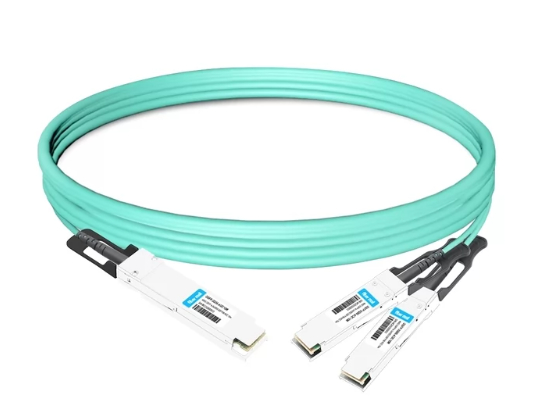
Budget-Friendly Solutions with LinkX
- Choosing the Right Cable: Select DACs for a network requirement of up to 100 Gbps and if the installation is rather basic. For data center architecture that is more intricate, AOCs will be best suited for higher performance applications.
- Maximizing Bandwidth: For spaces that require a substantiating data rate, AOCs will take priority despite the cost being higher.
- Environmental Considerations: In high EMI sectors, AOCs are preferable to ensure there will be transmission errors. In areas where EMI robots are negligible, use DACs as it proves more economical.
- Installation and Design: For dense network design, deployment of AOCs can be useful; meanwhile, in a low-density scenario that is particularly budget-conscious, it may be better to use DACs.
Maximizing Performance on a Budget
Good optimization of performance considering expenditure relates to balancing how much performance is needed and how much it is going to cost. Begin by thoroughly estimating your current network requirements and expected expansion in order to choose the right technologies. Give AOCs priority in circumstances in which flexible interconnections can significantly increase performance, particularly in complicated arrangements that are dense. On the opposite side, utilize DACs in less complicated configurations as this assists in reducing costs, thus ensuring that your automatic choice is both current requirements and future growth potential. Besides, regular assessments and upgrades of the infrastructure also help in achieving optimized performance without incurring unnecessary improvements.
What Are the Applications of LinkX Transceivers?
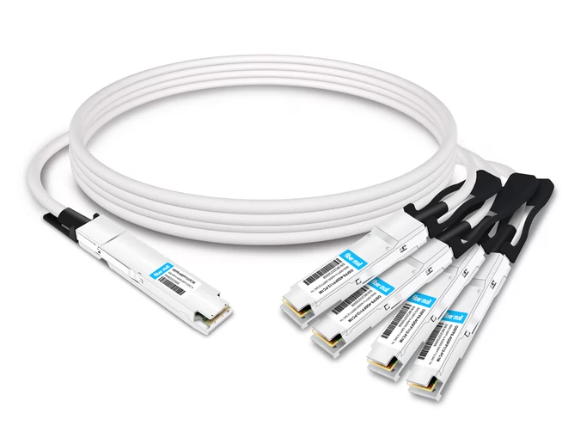
LinkX in High-Speed Infiniband Networks
LinkX transceivers are an essential element of high-speed Infiniband networks in the cluster environment as they enable interaction between computing clusters. They allow for high data rates required for operations that need fast data transfers like parallel computing and complex data computations. By delivering dependable solution with low latency, LinkX transceivers guarantee appropriate data flow which is essential in high-performance computing scenarios. Their utilization with Infiniband architecture enables network expansion which is vital with increasing data requirements.
Compatibility with Artificial Intelligence Systems
LinkX transceivers have been purposefully built to satisfy the fundamental requirements for the successful operation of artificial intelligence (AI) systems, which demand high-speed and low-latency communication. Given the factors mentioned above, LinkX transceivers substantially enhance the performance of AI systems, which are already characterized by high levels of parallel data flow and heavy workload computation. Therefore, these transceivers are constructed to accommodate a data rate required for the typical processing speed of AI algorithms working with real-time input data to maximize accuracy and efficiency.
In detailed benchmarking, it was noted that LinkX transceivers performed better than the conventional cut-off transceivers within the AI applications. Typical values of these metrics are 20% latency reduction compared to cut-off transceivers in AI applications such as deep learning model training, where the speed of task completion greatly affects algorithm performance norms. Also, LinkX transceivers ensure that scalable network architectures are supported which in turn enhances the growability of AI systems due to surplus data handling and processing requirements. This scalability will be vital for organizations wanting to defend their AI infrastructure from ever-increasing data requirements in the future.
Operating in a highly complex and efficient mode, LinkX transceivers are therefore a great addition to AI systems as they enable robust data management which translates to improved performance in machine learning, predictive analytics and more.
Utilizing LinkX in Storage Subsystems
Transceivers LinkX enhances the productivity of storage subsystems by allowing smooth connections and low-latency operations. In today’s computer storage systems with massive end-user data that must be accessed and pulled quickly, LinkX is unique because it supports even better technological protocols and a high traffic volume. This makes it a crucial technology for storage area networks (SANs) and network-attached storage (NAS). Furthermore, the transceivers developed robustly enhanced the scalability of the storage infrastructure in which the unit would be incorporated since, as more data were required, there was a need to expand. Besides, integration of LinkX transceivers into existing storage infrastructure was easy, protecting investments while enhancing the deployment of the new directions for data management.
Reference Sources
Frequently Asked Questions (FAQs)
Q: Why is NVIDIA LinkX Cable the best option for interconnect solutions with the highest bandwidth?
A: The products are fabricated to allow for high bandwidth and dependable performance with NVIDIA data center LinkX cables and transceivers. They adapt advanced technology including 50G-PAM4 and 25G-NRZ that greatly promote connectivity speed and cement interconnect solutions as in their class.
Q: Are NVIDIA LinkX cables designed to be linked to several switches and network adapters?
A: Yes, the NVIDIA Mellanox LinkX Ethernet cables and transceivers have been constructed with the compatibility of various switches and network adapters in mind; thus, integration of many networking devices is supported.
Q: What are the best budget alternatives for LinkX NVIDIA cables?
A: Of course, there are those looking for lower prices; LinkX offers some passive copper and DAC cables, which do not require much investment but still deliver efficient performance.
Q: How does an active or passive splitter cable enhance the performance of other NVIDIA LinkX devices?
A: With a DAC splitter cable in the picture, you can connect many devices with efficient port usage while also cutting down the power spent. This ensures that the devices perform at optimum efficiency while optimizing costs.
Q: How does the power consumption of NVIDIA LinkX cables compare to other solutions?
A: Power consumption is not an issue or rather a concern with these solutions as LinkX products, which include passive copper cables and AOC cables, are designed in a way that they require no power at all, which complements energy-efficient high-speed interconnects.
Q: What length options are available for NVIDIA Mellanox LinkX cables?
A: One of the several different lengths of the cables that NVIDIA Mellanox offers is 0.5m, which is convenient for certain networking requirements.
Q: How do NVIDIA LinkX cables ensure reliable operation?
A: Prior to being deployed for use in practice, NVIDIA LinkX cables undergo a series of tests during which their parameters are magnified in order to prove and guarantee that they are reliable. Such LinkX cables are tagged as 100% reliable, having supported components such as 200G NDR and 400.
Q: Are there specific NVIDIA LinkX cable solutions for top-of-rack configurations?
A: A licensed NVIDIA LinkX cable for a top-of-rack configuration can harness the needed functionality through specific LinkX cables that feature the required QSFP and OSFP connectors.
Q: What should I do if I need a specific NVIDIA LinkX cable configuration?
A: In the event that you do not want a uniform configuration, please reach out to us or PNY networking solutions for proper guidance to help you achieve your goal.
Related Products:
-
 NVIDIA MCA4J80-N003-FLT Compatible 3m (10ft) 800G Twin-port 2x400G OSFP to 2x400G OSFP InfiniBand NDR Active Copper Cable, Flat top on one end and Flat top on the other
$600.00
NVIDIA MCA4J80-N003-FLT Compatible 3m (10ft) 800G Twin-port 2x400G OSFP to 2x400G OSFP InfiniBand NDR Active Copper Cable, Flat top on one end and Flat top on the other
$600.00
-
 NVIDIA MCP4Y10-N002-FLT Compatible 2m (7ft) 800G Twin-port 2x400G OSFP to 2x400G OSFP InfiniBand NDR Passive DAC, Flat top on one end and Flat top on the other
$300.00
NVIDIA MCP4Y10-N002-FLT Compatible 2m (7ft) 800G Twin-port 2x400G OSFP to 2x400G OSFP InfiniBand NDR Passive DAC, Flat top on one end and Flat top on the other
$300.00
-
 NVIDIA MCA7J75-N004 Compatible 4m (13ft) 800G Twin-port OSFP to 4x200G QSFP112 InfiniBand NDR Breakout Active Copper Cable
$850.00
NVIDIA MCA7J75-N004 Compatible 4m (13ft) 800G Twin-port OSFP to 4x200G QSFP112 InfiniBand NDR Breakout Active Copper Cable
$850.00
-
 NVIDIA MCA7J65-N004 Compatible 4m (13ft) 800G Twin-port OSFP to 2x400G QSFP112 InfiniBand NDR Breakout Active Copper Cable
$800.00
NVIDIA MCA7J65-N004 Compatible 4m (13ft) 800G Twin-port OSFP to 2x400G QSFP112 InfiniBand NDR Breakout Active Copper Cable
$800.00
-
 NVIDIA MCP7Y40-N001 Compatible 1m (3ft) 800G InfiniBand NDR Twin-port OSFP to 4x200G QSFP112 Breakout DAC
$165.00
NVIDIA MCP7Y40-N001 Compatible 1m (3ft) 800G InfiniBand NDR Twin-port OSFP to 4x200G QSFP112 Breakout DAC
$165.00
-
 NVIDIA MCP7Y10-N001 Compatible 1m (3ft) 800G InfiniBand NDR Twin-port OSFP to 2x400G QSFP112 Breakout DAC
$155.00
NVIDIA MCP7Y10-N001 Compatible 1m (3ft) 800G InfiniBand NDR Twin-port OSFP to 2x400G QSFP112 Breakout DAC
$155.00
-
 NVIDIA MCP7Y50-N001 Compatible 1m (3ft) 800G InfiniBand NDR Twin-port OSFP to 4x200G OSFP Breakout DAC
$255.00
NVIDIA MCP7Y50-N001 Compatible 1m (3ft) 800G InfiniBand NDR Twin-port OSFP to 4x200G OSFP Breakout DAC
$255.00
-
 NVIDIA MCA4J80-N003 Compatible 800G Twin-port 2x400G OSFP to 2x400G OSFP InfiniBand NDR Active Copper Cable
$600.00
NVIDIA MCA4J80-N003 Compatible 800G Twin-port 2x400G OSFP to 2x400G OSFP InfiniBand NDR Active Copper Cable
$600.00

